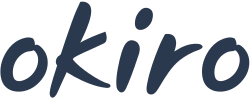Maximizing Profit Potential: Why Prop Trading Offers a Competitive Edge
In the competitive landscape of financial markets, every investor seeks an edge that can lead to enhanced profitability. Proprietary trading, or prop trading provides such an advantage. Unlike traditional investment strategies, prop trading allows firms to use their own capital to trade in various financial instruments, directly benefiting from market movements. This model opens up unique opportunities to maximize profit potential in ways that other trading approaches cannot. Here’s why prop trading offers a distinct competitive edge.
1. Access to Higher Profit Margins
Proprietary trading firms have the freedom to take on more substantial positions in the market, resulting in a higher potential for profit. Since they trade using their own capital, any gains from successful trades directly contribute to their bottom line. Unlike traditional investment methods, which may involve managing funds on behalf of clients and earning fees or commissions, prop traders don’t share their profits. This setup allows them to capitalize on market opportunities more effectively, and the potential for higher returns becomes significantly amplified.
2. Advanced Risk Management Strategies
One of the reasons proprietary traders often outperform other market participants is their focus on advanced risk management techniques. Since firms are trading their own capital, they have a vested interest in protecting it. Proprietary trading firms typically employ sophisticated risk controls, such as using stop-loss orders, diversifying their portfolios, and applying hedging strategies to mitigate potential losses. The constant monitoring and fine-tuning of these techniques enable firms to minimize risks while maximizing their reward potential. By managing risk effectively, prop traders can sustain profitable operations over the long term, which is key to maintaining a competitive edge.
3. Speed and Agility in Decision-Making
Prop trading offers a significant advantage when it comes to the speed of execution. Because proprietary firms are not encumbered by the need to answer to clients or investors, they can make rapid decisions and act on market opportunities in real-time. This agility allows them to capitalize on fleeting market conditions that may be missed by slower-moving institutional investors or retail traders. In volatile markets, the ability to enter and exit positions swiftly can be the difference between making a profit or incurring a loss.
4. Strategic Flexibility
Proprietary trading firms are free to adopt a wide variety of strategies based on market conditions, unlike more traditional investment models that may be constrained by specific mandates. This freedom enables them to explore different asset classes, including equities, commodities, forex, and derivatives, and adjust their strategies to suit the prevailing economic environment. Whether using quantitative models, algorithmic trading, or discretionary approaches, prop traders can remain adaptable to changing market dynamics, thereby gaining an edge over others who might be limited in their approach.
5. Innovation and Technology Integration
Prop trading firms often invest heavily in technology and innovation, incorporating sophisticated algorithms and automated trading systems. These systems can process vast amounts of data in real-time, identify patterns, and execute trades faster than human traders ever could. Such technological advantages allow prop trading firms to stay ahead of the curve, reacting to market signals and executing strategies with unmatched precision. The combination of cutting-edge technology and deep market expertise amplifies their ability to extract profits from financial markets more efficiently.
6. Long-Term Financial Growth
Proprietary trading isn’t just about short-term gains; it’s also a strategy that allows firms to build long-term wealth. Through strategic reinvestment and the compound growth of their capital, prop trading firms can expand their operations and gain access to larger markets. As these firms continue to refine their trading strategies, they benefit from improved performance and financial stability. Over time, this compounded growth positions them as dominant players in the financial markets, making them highly competitive.
Conclusion
Proprietary trading offers a unique opportunity for firms to maximize profit potential in ways traditional models cannot match. By leveraging their own capital, employing advanced risk management strategies, making quick decisions, and utilizing cutting-edge technology, prop traders have a significant competitive edge. This combination of factors enables them to capitalize on market opportunities more effectively, maintain flexibility, and achieve long-term financial growth. In an industry where gaining an edge is crucial, proprietary trading stands as a powerful strategy for those seeking to maximize their profit potential.
